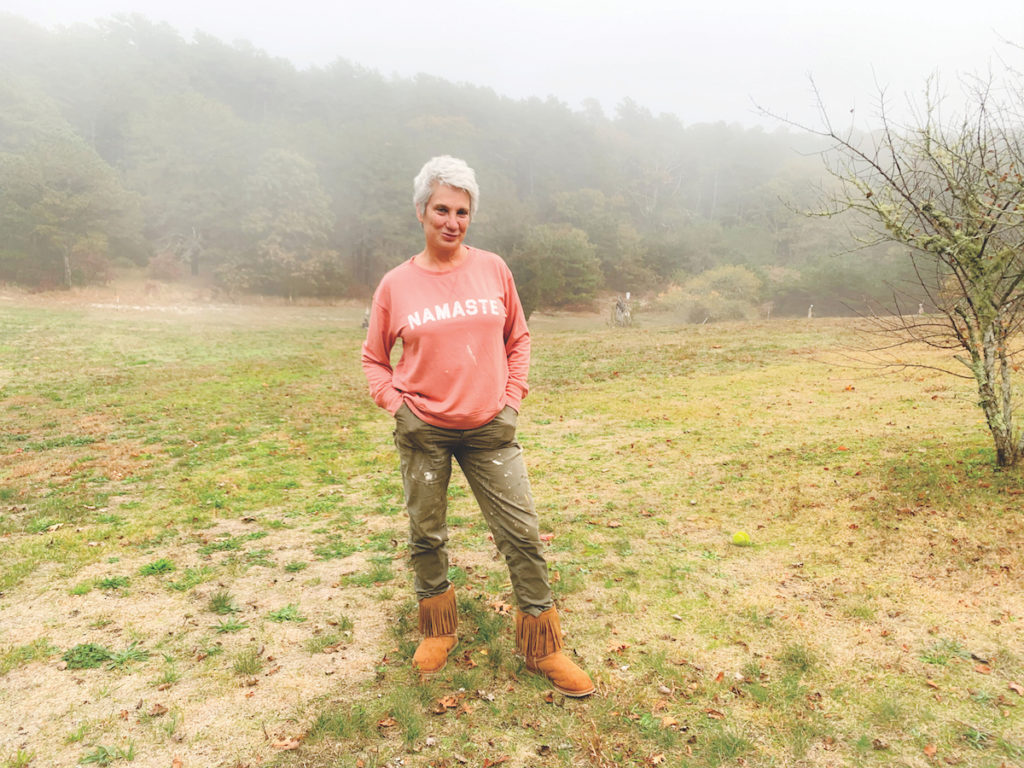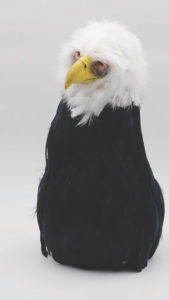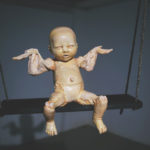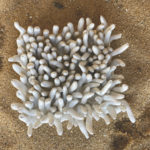
“I came to Truro to create cremation urns,” says sculptor Jamie Lehrhoff Levine, one of five resident artists who recently arrived at Truro Center for the Arts at Castle Hill. Back home in New Jersey, Levine was immersed in a project to craft personalized urns for the living, a reaction to the pandemic. Her first urn was an eagle, adorned with feathers, beak, and eyes, which she made for her husband, Gil, and pointedly titled Just in Case.
“Thinking about death is scary,” Levine says. “How do you make it digestible? I use humor as a coping mechanism. You think you’re going to die? Well, now we’re prepared!”
Once she got comfortable at Castle Hill, however, Levine’s plans changed, and it’s not the first time her residency has taken an unexpected turn.
She had originally driven to Truro on March 8, planning to spend a month creating art inspired by nature to address environmental concerns. Death and cremation urns were the farthest thing from her mind. While still on the road, she received a phone call: her residency had been canceled due to Covid-19, and the world was going into lockdown.

Turning back toward New Jersey, disappointed and frightened, Levine found a slim silver lining in having a carload of art supplies to take into isolation. At home, however, she was surrounded by news of the pandemic, and her art took a dark turn.
“I was working in black-and-white paintings, a complete departure from my usual style,” she says. “They were extremely immediate, and I worked fast because I was so anxious.” One of Levine’s paintings from this time, Free Fall, shows the artist floating naked and undernourished in a fetal position. “I was starving for socialization and communication,” she says, “and I felt unprotected and unable to protect those I love.”
It was out of this mood and the need to find some relief in levity that Levine turned to the urn project. But when she finally arrived at Castle Hill this month to restart her postponed month-long residency, her emotions shifted yet again. “I felt immediately safe,” she says. “I went to the ocean on my first day here and looked at the vastness. That’s when I realized that there is a bigger picture than what is happening around me, and I found myself emerging out of my darkness. My new work is about what it means to be living.”
From an early age, Levine’s immediate surroundings have had a strong impact on her art, both in subject matter and choice of materials. She describes her process as “response work,” adding, “I am constantly letting my environment guide me and speak to me.”
The daughter of a divorced, hard-working mother, Levine spent her childhood exploring nearby conservation land with her best friend, Bonnie Blafer Schweinler, who also became an artist. “We both saw the world in a different way,” Levine says, “but we were in tune with nature.” Not having many toys to play with, Levine created art using whatever materials she could find — and still does. “I explore all materials, and I use them in a way that best speaks to what I’m trying to communicate,” she says.
After studying industrial and textile design at Syracuse University, she ended up working in real estate, then returned to school in her early 50s to get an M.F.A. at Montclair State University in New Jersey. Inspired during her studies by the image of the Chimera from Greek myth — it has a lion’s head, goat’s body, and serpent’s tail — Levine began to explore the idea of bio-engineered creatures composed of cells from two or more genetically different beings.
The image of a genetically mutated, featherless chicken that had been bred for fast growth and inexpensive processing incited Levine to create her installation piece Come Play With Me, merging raw chicken parts bought in a supermarket with a plastic baby doll. “The image of that bald chicken was horrific,” she says. “I couldn’t let it go, so I created a chicken baby on a swing, sitting precariously, not holding on. Is it going to fall? Is it going to fly? It’s that extreme fragility and vulnerability that I was attempting to express.”
Levine adds that creating Chimeras has taught her what it means to be fully human, “a goal towards which we must all aspire, rather than a static state of entitlement.”
At Castle Hill, no longer focusing on cremation urns, Levine has been working on pieces that come out of a conversation with nature — creatures of the ocean who exist and survive in community. “I am creating small worlds that engage with what it means to be alive,” she says. “The corals I am studying grow in clusters and inspire themes of family, togetherness, and community.” Levine’s creatures of the ocean are hybridized, taking parts from different beings to meld into new forms. “My work just happens that way,” she says.





